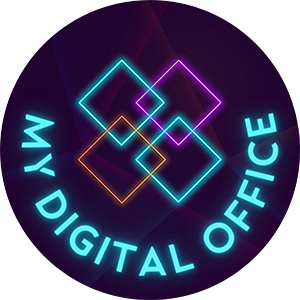For every perk of remote working, there’s a downside. After all, it’s still a fresh concept for organisations, leaders, and employees.
However, flexible work modes are becoming more widespread. And one of the most pressing challenges faced by work-from-home employees is remote work visibility.
Being visible to management can be tricky. You want to be seen as somebody who is engaged, adds value, and regularly contributes. Importantly, you want to get recognition for your efforts and accomplishments.
According to data, 45% of remote and hybrid workers agree that job visibility is one of the top three daily issues.
This shows the importance of understanding the problem better while simultaneously developing solutions and implementing new working practices.
So, in this article, we’ll cover everything you need to know about remote work visibility, its negative impact on remote employees, and practical solutions you can implement in your workplace.
What Is Remote Work Visibility?
The definition of workplace visibility depends a lot on the context.
In an office setting, the term visibility refers to the state of being recognised and valued for your effort, actions, and completed tasks. Visibility in the office, to some extent, comes by default since you’re sharing a physical space where your colleagues and managers can see and interact with you.
When it comes to hybrid and remote settings, visibility gains a new meaning. As workers have fewer opportunities for interaction and participation in wider conversations, remote work visibility has a rather negative connotation attached to it.
It’s frequently associated with being constantly online while anxiously wondering whether co-workers and managers notice your efforts.
Importance of Visibility at Work
Gaining visibility at work, whether remotely or on-site, is crucial for multifold reasons.
First of all, people don’t want to be isolated or unseen. It’s easy to become anonymous, especially if you work as part of a fully remote team. However, with anonymity comes a fear that others perceive you as a slacker rather than a dedicated and valuable team player.
Moreover, being more visible often can pave the way for a promotion. A study conducted by Harvard Business Review found that women in tech who wish to advance in their careers must “get in front of the top dogs,” meaning make themselves more noticeable.
So, it’s safe to conclude that being visible is important and can sometimes trump your skills and results.
Adverse Effects Due to the Lack of Remote Work Visibility
A shared sentiment among remote workers is that getting enough exposure is somewhat taxing. Many feel an uncontrollable urge to prove they are engaged, available, and online almost 24/7.
Statistics reveal that 38% of remote employees actively go out of their way to be noticed while working. In addition, women workers, in particular, feel 2x less visible than their men counterparts.
But in the quest for more exposure, workers simply find themselves resorting to unproductive behaviours, such as constant checking-in with bosses and co-workers, activating work emails and notifications on the phone, or even working themselves into the night.
What’s more, career-focused workers worry about their promotion opportunities, perhaps with a good reason.
Studies show that proximity bias is a significant factor when it comes to better career opportunities. When people see each other daily, they build trust, form stronger relationships, and, in the case of boss vs. subordinate, even earn a promotion.
For this reason, remote workers feel disadvantaged, which negatively affects their morale and commitment to the business.
3 Effective Ways to Increase Visibility in Remote or Hybrid Settings
Work visibility is one of the most prominent challenges in remote working, which requires workers and leaders to step in and play their part.
Let’s take a look at three ways to enhance remote work visibility:
1. Stop Hiding
This might sound like an obvious one, but sometimes employees themselves need to come out of their shells from time to time. It’s easy to take a passive role in virtual meetings, hiding behind the screen, but that won’t get you noticed.
Of course, gaining more visibility shouldn’t be about climbing over your colleagues’ heads just to get seen. However, speaking up during the meetings, getting involved, and connecting with your co-workers on a more personal level are essential activities for increased exposure.
2. Take Advantage of Digital Office Solutions to Emulate Office Environment
Being physically present in the office equals being visible, right? Well, maybe not necessarily ‘visible’ in terms of all your achievements. But, your physical body is in the office cubicle next to your coworker, sitting at the desk and staring at the monitor.
Unfortunately, you don’t get the same kind of exposure when you’re working off-site. Chances are managers themselves are questioning if their team is even there (online).
My Digital Office can help remote teams to overcome workplace visibility challenges. Thanks to our virtual office solution, you can quickly know where individual team members are and what they’re doing right now. My Digital Office allows you to be part of a live and collaborative working environment with 100% visibility into everybody’s effort.
Interested to learn more about it? Why don’t you try My Digital Office and see how it can benefit your remote or hybrid business?
3. The Need to Raise Awareness and Provide Training to Remote Managers
Lastly, managers must be aware that the visibility issue exists and that their remote employees are worried about future progression opportunities and day-to-day tasks. Leaders should also try to find a way to connect with everybody on the team so nobody feels isolated or left out.
Furthermore, managers need to be better supported in their roles and provided with additional training, which they can implement to foster an equitable remote work environment.
Bottom Line
Remote work visibility will continue to be an issue for many organisations, especially as they transition to new work modes. Technology and digital office solutions are viable tools that can help companies address the visibility challenge and should be explored in conjunction with more effective management training.

